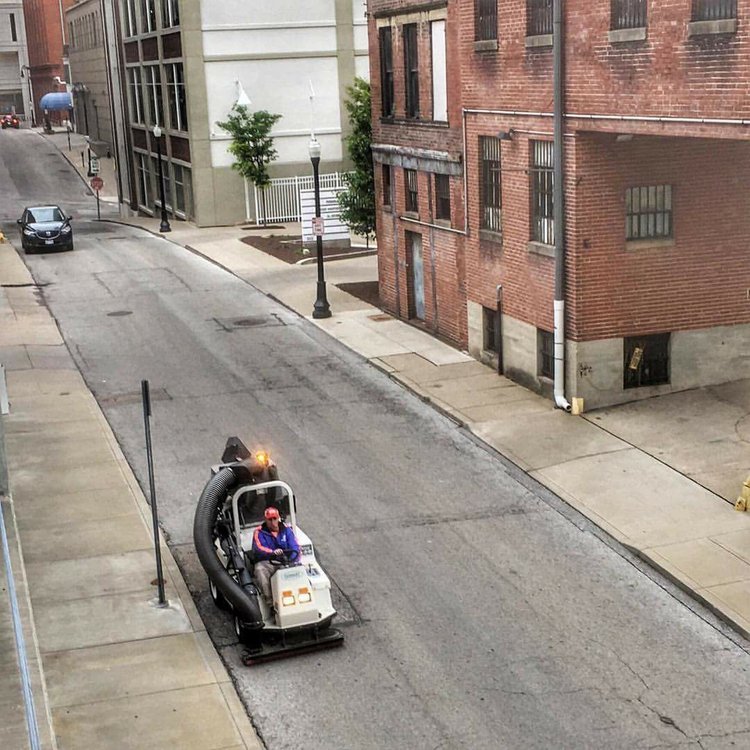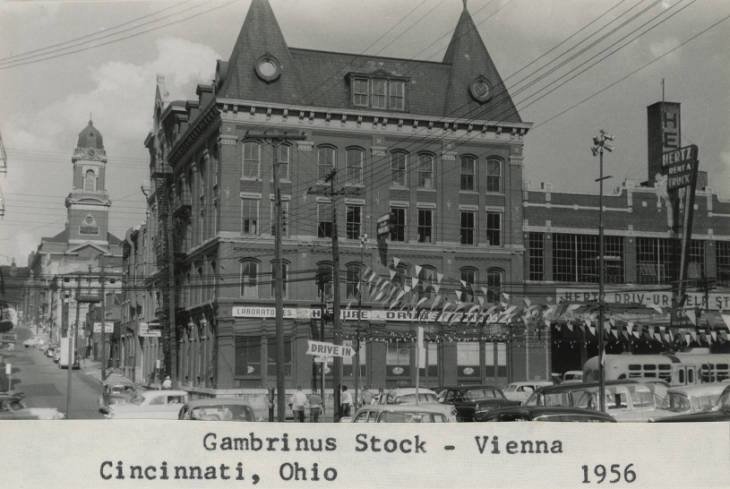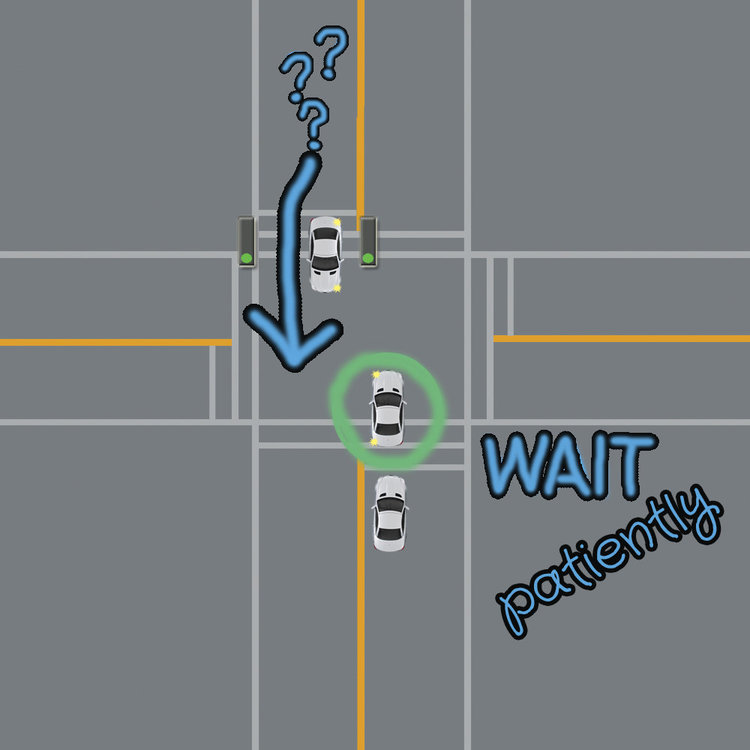Everything posted by jjakucyk
-
Metro Cincinnati: Road & Highway News
It's only the crossover/oncoming collisions that are going to be worse. I'd imagine rear-ending is the typical incident, or possibly bad lane changes and sideswipes, and those are probably less-bad than on an interstate highway.
-
Metro Cincinnati: Road & Highway News
My guess why they haven't added a median is because having the blunt end of a jersey barrier facing oncoming traffic is super dangerous, and you'd have that condition at Delta, Torrence/Taft, Kemper, and then somewhere on the 5th Street Vidaduct. They'd probably want to do something like this where it comes into Fairfax https://goo.gl/maps/QbtQ7ka2HiVdhs39A instead of the "hit me" target at Dead Man's Curve https://goo.gl/maps/r4bfi2xMNmzz7Pua6. Also, when there are landslides, they wouldn't be able to shift the lanes around with cones like they did over the past few weeks. I'm surprised they haven't finished cleaning up the mess yet (they chopped down and chipped up all the trees and just left the chips in a pile against the retaining wall), but that's probably a political move to keep the lanes closed and have people complaining so they can do more news stories. As to why there aren't more crashes, it's probably because the road is scary enough to force drivers to pay more attention. I think I heard that Columbia Parkway is no more crash prone than any typical city street, so the tight lanes and close passes are probably doing some good. It's like "put a big metal spike on every car steering wheel and people would drive much safer." http://www.weirduniverse.net/blog/comments/tullock_spike
-
Cincinnati: Wasson Way Trail
The going rate for property in Hyde Park, Mt. Lookout, etc. was $1M/acre 15 years ago, and I can't imagine it's gone down since, so at 0.16 acres for the east lot (not sure about the west lot, there's some weirdness going on there) that sounds about right.
-
Cincinnati: Liberty Street Road Diet
Aren't most of the monitoring points for Liberty in the 14-18,000 range?
- Cincinnati: West End: TQL Stadium
-
Cycling Advocacy
The city HAS a small street sweeper, they got it back in 2017, they just refuse to sweep bike lanes.
-
Cincinnati: Liberty Street Road Diet
Agreed, anything less than (or would that be more than?) the 50' pavement option isn't even a diet, it's going to Whole Foods one time and thinking you're being healthy.
-
Cycling Advocacy
I haven't noticed as much glass as just gravel and muck. The problem with the gravel is that if it's not removed properly, it just keeps getting pushed around and won't go away on its own. At least leaves decompose after a while.
-
Cincinnati: Bicycling Developments and News
Is there a comprehensive map of bike repair stations and air pumps out there? Seems like that would be super helpful if you have a slow leak, a bum chain link, or don't want to burn through a CO2 cartridge. Two weeks ago or so I got a flat near the casino and then went to the Washington Park garage to top up my tire after hand pumping, but the pump in the garage had a leak in the hose fittings so it didn't work. There's also a free air pump at Gateway on Vine and Central, but it's schrader only, no presta.
-
Cincinnati: Liberty Street Road Diet
Right, that study was "accidentally" released "early" and then pulled by Cranley since he didn't have a chance to spin doctor it, but the info still got out there that there were no more crashes than typical for a street like that. I do agree that if done properly the cycle track would be up above street level a bit, which would help it stay at least a little cleaner. The presence of a curb would much better communicate where the edge of the roadway is and make the parking situation more understandable. Either way, I think it was Jeff Speck who said it best, "you don't have a bike lane problem, you have an intermittent parking problem."
-
Cincinnati: Downtown: 1010 On The Rhine / Downtown Kroger
143 little air conditioners.
-
Cincinnati: Liberty Street Road Diet
It's sad and disturbing that some people think 40,000 deaths per year is a perfectly acceptable trade off for motoring convenience.
-
Cincinnati: Retail News
There's a Fresh Market just across Montgomery Road, but there's also one just down the street from the Whole Foods in Rookwood too, so maybe that's no big deal.
-
Notre-Dame Cathedral Fire
It may end up being steel just out of necessity. Trusses can be designed to be self-supporting without adding outward thrust to the supporting walls below, which is what the flying buttresses are for. While the structure of the masonry walls has held for centuries, that doesn't mean it'll last forever, and now it's been compromised by heat. Some cathedrals have had walls collapse, and others (like Chartres I believe) have some worrying bowing in their columns. So new engineered trusses could be made to take the horizontal loading off the walls and give the building a new lease on life. They could probably do trusses out of wood too, such as with glue-lams or laminated-veneer-lumber that are engineered into trusses, but it may not be prudent considering the scale and the lack of public access. Heavy timber is supposed to be fireproof, but maybe this was just too old and too dry, and there was too much other non-heavy timber that kept it burning. I am kind of surprised they never put a sprinkler system of some sort up there.
-
Cincinnati: Pendleton: Development and News
-
Freight Railroads
Has there really been that much push for abandoning active railroads to turn into trails?
-
Northern Kentucky: Random Development and News
Huge...tracts of land. Probably so they can build the new exit without having to close off the old overpass during construction, which would likely need to be widened anyway. It also looks like there's a lot of houses pretty close to Graves so widening it would be rough. "Look, we can either put this new arterial street right on your front door step, or it can go in the creek 500' back and you get to live on a cul-de-sac."
-
Cincinnati: Eastern Bypass
That 1970 map looks like a lot of the initial intercity highway and beltway plans that were drawn up in the 1940s and were actually fairly close to what was in fact built. Those plans were pretty much just made up based on very little actual analysis, but once those lines were drawn they were relentlessly persistent.
-
Northern Kentucky: Random Development and News
It's not even 1.5 miles from the KY-237 exit. Isn't that some violation of exit spacing standards?
-
Greater Cincinnati Metro (SORTA) and TANK News & Discussion
BRT in a median needs extra room for the stops/shelters. With curb running it uses the existing sidewalk footprint for that. I find that shocking, I would have thought it near the bottom. Of course the actual numbers are crap (4,600 passengers/day). Still, for Hyde Park/Oakley the time isn't really that bad, it's the frequency, which is abysmal (I see Jake just beat me to that statement). Past Withrow High School where the two 11 routes split, rush hour frequency is only every 30 minutes, with 40-50 minutes more common for the rest of the day. Even where 11-Erie Hyde Park and 11-Madison Oakley overlap, 15 minute rush hour headways and 20-25 minute off peak is still crap.
-
Greater Cincinnati Metro (SORTA) and TANK News & Discussion
That's not BRT though, that's express bus service. There's no separation from the travel lanes to prevent blocking by delivery trucks, garbage trucks, right turning vehicles, or anything else. It's not center-running, which isn't necessarily a prerequisite, but it helps with prioritization and navigating through intersections. There's not really much else to evaluate.
-
Greater Cincinnati Metro (SORTA) and TANK News & Discussion
And "real BRT" isn't just some painted bus lanes either, that's simple express bus service. At best there's only five lines in the whole country that can be considered real BRT at all, and they still miss many of the key factors. It' basically needs to be light rail in a reserved median, but with buses instead of rail vehicles. That's Central Parkway scale infrastructure, and even then only really south of Liberty. Gilbert and Spring Grove are the only other radial thoroughfares that even come close.
-
Cincinnati: Avondale: Development and News
It's right turn lanes that are more insidious. They do little to improve traffic flow (which left turn lanes do help with), and they really mess up the curb line, sidewalk alignments, and drainage patterns. They have little to no ROI, but they really eat up space. The way DOTE designs them also makes them nearly useless because they're so short. The Kennedy Connector is a prime example. That said, 4-lane surface streets are very dangerous because of left turning movements. If you have two people waiting to turn left, one facing each direction, they block each other's view of fast moving traffic coming up the right lane, leading to a lot of t-bone and offset head-on crashes. That's why the 4 to 3 conversions improve safety, but also why you see some weird left-of-median turn lanes, such as on Columbia Parkway in Columbia-Tusculum, or in Mt. Lookout Square. It's to ensure people turning left have a good view around other vehicles facing them.
-
Cincinnati: Avondale: Development and News
Navy Yard looks about as walkable as Oakley Station. It's very spread out with many parking lots and low-density uses. Just because there's an internal connected street grid, sidewalks, trees, and brick crosswalks, that doesn't automatically make it walkable. It's just a better form of suburban development. Could it mature into an actual urban neighborhood someday? Perhaps. I've made the comparison before that Oakley Station and The Banks have the same street cross-section, and it looks like Navy Yard is similar. So the bones are decent, but there's little meat. The tough part is poor connectivity with the surrounding neighborhood. As for MLK/Reading, I have little hope because those bones are already so screwed up. Take UC and Children's hospitals, and mix it with Rookwood and Kenwood, and I think that's what this is going to become.
-
Cincinnati: General Transit Thread
I don't know, it seems like a path the Cincinnati subway could have taken if it was put in operation under a hostile political climate that it was never able to get out of (sort of like if Cranley stayed mayor for 30 years *shudder*). Had it been completed by the depression, only one interurban remained that would have been able to make any use of it (the Cincinnati & Lake Erie), which would likely have been a non-factor in the success of the subway. It would then need to either stand on its own as a self-contained rapid transit route, or act as an express feeder for the longer-haul streetcar routes it intersected, such as 21-Westwood/Cheviot, 17-College Hill, 78-Lockland, and 4-Kennedy Heights. Rochester was not able to make a self-contained route work long-term, it looks like it was rapid transit with interurban through-routing, but not otherwise integrated with the streetcar network. Of course Rochester is also smaller, and the southeast leg ran through what is today pretty leafy suburbs, so it's certainly not apples to apples. Of course it helped that they didn't have two different track gauges to worry about either.









